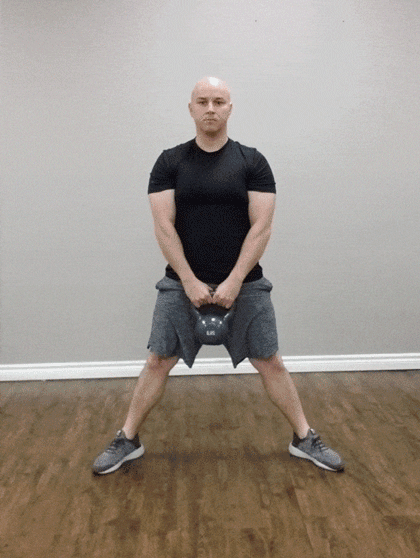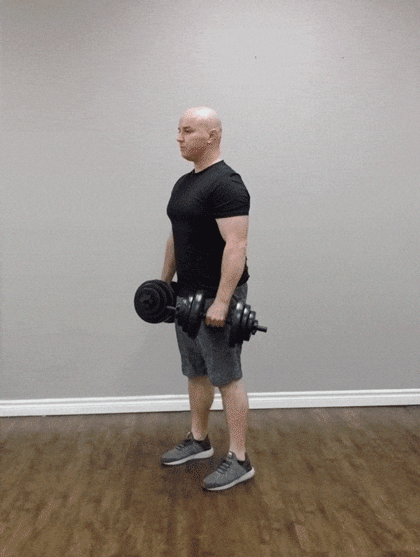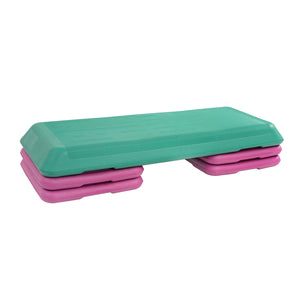Your glutes are a set of muscles that when working together optimally create the bodies strongest muscular response. When your glutes are strong, activities like walking, jogging, running, climbing stairs, lifting objects, standing up, and jumping are no problem to perform. While we may not feel the effects of weak glutes in the short term, neglecting this important muscle group could cause all these activities to feel increasingly difficult over time. It also important to know that the basic function of the glutes in human biomechanics remains the same on all humans. Apart from a physiologic defect or structural abnormality, everyone should be focusing on training similar movement patterns that optimally target the glute muscles. It’s also important to remember that everyone’s training experience will vary. This means that certain exercises may or may not be appropriate for everyone.
For example, a novice exerciser should not try to place a barbell on their back and attempt barbell back squats without the supervision of a certified fitness professional. But they may be able to step up onto a platform to perform a step-up movement. Both exercises will encourage glute activation, with the step-up motion being more appropriate for those who lack experience with barbell training. Another example would be a single leg squat. A more stable motion to target single leg glute activation would be to perform a lunge. Both challenge glute activation on one side of the body, but the lunge movement provides more stability when compared to the single leg squat.
If you want to enhance your results, consider incorporating exercise equipment for glutes into your routine. Ok, so you have decided that standing up, walking, and having a general ability to move around is important. Or, maybe you want bigger and stronger glutes. Either way you should start with a glute exercise that is comfortable for you to perform. If you are not comfortable with the movement or simply find the movement to technical for your current abilities, you should try a different exercise. Below you will find a few exercises that are great to start your glute training journey.
Exercise 1 – Step Ups

Step ups are a great way to introduce glute training to your workout routine. Start with just your body weight as you step up on to a raised platform. A good height to start with would be a 12-inch step or box. If you don’t have a step or box, you can use stairs. To perform this movement, stand a few inches away from the surface you are planning on stepping up to. With one leg, step up onto the surface while maintaining good posture. Press down through the bottom of your stepping foot while bringing your hips forward as you bring your opposite foot up to the surface. Step down slowly and repeat with the same leg, completing all reps before completing the step up on the opposite leg.
Exercise 2 – Sumo Squats

Sumo squats are a great intro squatting movement because they are easier to perform in a more upright position. Start by setting you feet a bit wider than shoulder width with your toes pointed out to about forty-five degrees. While maintaining an upright posture, push your hips back before bending your knees to bring your hips down towards the ground. If you are holding a weight, let the weight drop slowly between your legs toward the floor. When you start to feel a stretch through your inner thighs, press through the bottoms of your feet to bring your hips back up to the starting position. As you get stronger you can increase the amount of weigh you are holding with a dumbbell, kettlebell, or barbell.
Exercise 3 – Lying Hip Thrusts

This exercise is great for all fitness levels. It can be performed using only your body weight, or with a loaded barbell. Simply lay down on your back with your knees bent at 90 degrees and feet flat on the floor. Gently raise your hips off the ground until your body is inline from head to knees. You should feel a significant squeeze in your glutes at the top of this movement. As you get stronger you can start to add more weight across the front of your hips.
Exercise 4 – Romanian Dead Lifts (RDL’s)

Good lifting technique is not only critical to help prevent back pain; it is great for developing strong glutes. This movement should be performed slowly with lots of attention on good form. A neutral spine position should be maintained through each repetition. Start by slightly bending you knees while pushing you hips straight back. Let your torso fall forward while keeping your spine straight. Once you feel a stretch in the back of your thighs, stop the movement and push your hips forward to return to the starting position.
Exercise 5 – Barbell Back Squat
Squats, when done correctly are one of the best movements to increase your glute strength and development. While it may be a bit intimidating to step into a power rack, after awhile it can become a comfortable training environment. Getting comfortable with the barbell is the first step to performing a back squat. Start by finding a comfortable grip on the bar and place the bar on the upper part of your back across the top of your shoulders. Your feet should be about shoulder width apart. Once you have a firm grip on the bar. Stand upright and take a couple small steps back from the rack. Start the squat by pushing you hips back while bending your knees to bring your hips down towards the ground. Only squat to a depth you can maintain good posture. Press through the floor with the bottom of your feet to start your ascent back into the starting position.
Take Home Points
- Remember, everyone is different and often your will find the best results by trying a few different glute exercises rather than repeating your favorite one long term. If one exercise is uncomfortable, try a different one.
- Don’t give up on the squatting movement. The exercise is incredibly important to perform well. It requires your hips, and core to work together to create a strong base of support for your whole body. When do correctly, there are few exercises that can make you feel like you can handle daily activities with ease.
- Add more variety. There are many ways you can add variety to your glute training program. After you have mastered a few different glute exercises, you can make them more difficult by increasing the weight being used, the number of reps performed, or speed and tempo of each rep.
- Try to aim for targeting your glutes at least one time per week. Start with a couple sets of 15 reps of one exercise and add more as your strength and endurance improves.

























Add Your Name & Email
Please enter your name and email to continue.We won’t display your email publicly.